You know that feeling when your paycheck just slips through your fingers every month? Rent, bills, the usual. And yet, there’s this part of you that thinks, “There’s got to be more to life than just working to pay bills.”
Well, it turns out there is another way. Imagine ditching the daily grind for something way more interesting, like wandering ancient streets in Europe or sipping coffee by a tropical beach. Sounds like a dream, right? But it’s actually more possible than you might think.
There are a handful of places where you can live really well for less than $1,000 a month. A life full of culture, beauty, and experiences that a high-rent city could never offer.
In this guide, I want to show you spots where living for less doesn’t mean sacrificing quality of life. In fact, it’s often the exact opposite. For the same amount you’re spending on rent in a crowded city, you could be living somewhere way more fulfilling!
Contents
- 1 11 Charming Destinations For Less Than $1,000 A Month
- 1.1 1. Bali, Indonesia: The Island of Gods on a Budget
- 1.2 2. Da Nang, Vietnam: A Laid-Back Beach City with Urban Perks
- 1.3 3. Sucre, Bolivia: The White City on a Budget
- 1.4 4. Arequipa, Peru: The Radiant White City of Volcanoes
- 1.5 5. Bacău, Romania: A Hidden Gem in Eastern Europe
- 1.6 6. Bursa, Turkey: The First Capital of the Ottoman Empire
- 1.7 7. Crete, Greece: Mediterranean Island Life on a Shoestring
- 1.8 8. Jaipur, India: The Vibrant “Pink City”
- 1.9 9. Dar es Salaam, Tanzania: A Bustling Coastal Metropolis
- 1.10 10. Mombasa, Kenya: Swahili Culture on the Indian Ocean
- 1.11 11. Penang, Malaysia: A Culinary and Cultural Haven
- 2 The Nitty-Gritty: Visas, Finances, and Healthcare
- 3 Final Thoughts
11 Charming Destinations For Less Than $1,000 A Month
1. Bali, Indonesia: The Island of Gods on a Budget
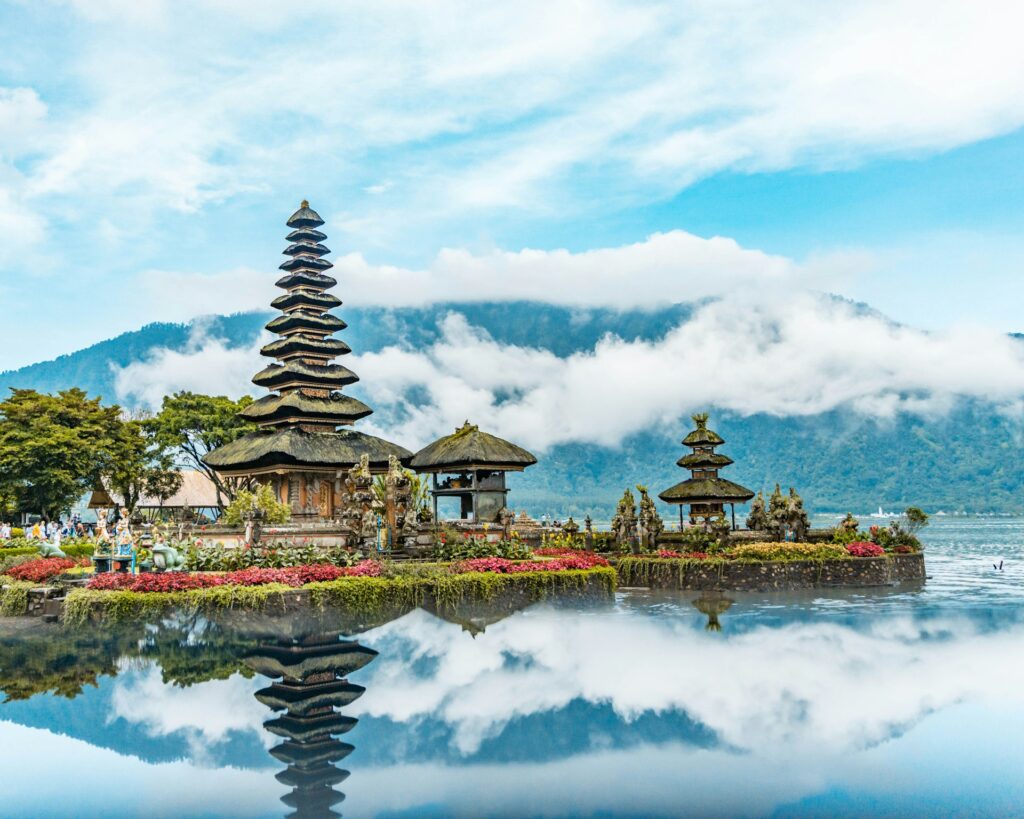
Bali is one of those places that lives up to the hype. It’s known as the “Island of Gods” for a reason. There’s this spiritual energy that just pulses through the island.
Balinese Hinduism is everywhere, from the daily rituals to the constant scent of incense in the air. The island’s got a little bit of everything: Kuta’s busy tourist spots and Ubud’s quiet jungle vibes.
Whether you’re after adventure or serenity, Bali has a way of drawing people in, especially digital nomads and people looking to escape the grind.
Living here feels like being constantly surrounded by nature’s beauty. Picture waking up early to watch the sunrise over Mount Batur, strolling through those iconic rice terraces, or hitting the beaches in Uluwatu.
Bali’s peppered with temples, and the daily rituals of the locals add to the feeling of peace. The people here are incredibly warm, and there’s always something creative happening: traditional dance, music, and arts are woven into daily life.
As for food, the local warungs (small eateries) serve up dishes like sate lilit (a minced meat satay) and betutu (slow-cooked duck or chicken) for just a few bucks.
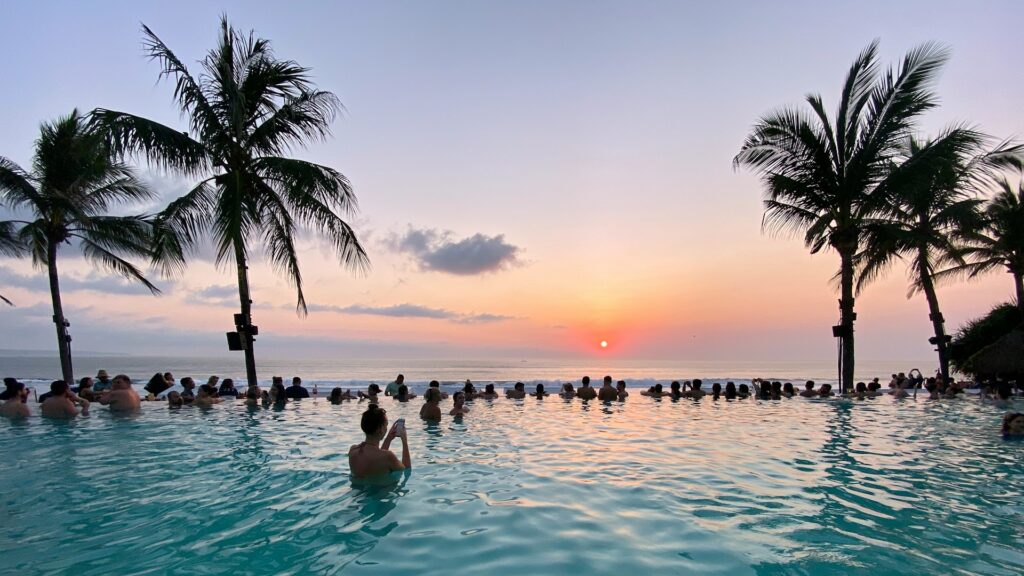
Living in Bali for under $1,000 a month is 100% doable if you embrace the local way of life. A room in a guesthouse or homestay will run you about $250–$400 per month. Eat at warungs and you can keep your food costs between $150 and $250.
As for getting around, a scooter rental will set you back about $60–$100 per month. It’s a legit, high-quality way of life.
Category
Estimated Monthly Cost (USD)
Rent (Guesthouse/Homestay)
$350
Food (Mostly local warungs)
$200
Transportation (Scooter & fuel)
$80
Utilities & Internet
$70
Miscellaneous (Visa, leisure)
$200
Estimated Total
$900
Practicalities
Visa: For longer stays, you can apply for a Social Visa, which allows for up to 180 days. This requires an Indonesian sponsor, but agents can often help with the process. For shorter visits, an official eVisa can be obtained online.
Safety: Bali is generally safe, but be mindful of petty crimes like bag snatching in crowded tourist areas. Common tourist scams and health issues like “Bali Belly” from contaminated food or water are also things to watch out for.
Internet: Speeds vary. In digital nomad hubs like Canggu and Ubud, you can find fiber-optic connections with speeds of 100-300 Mbps. In more remote areas, expect speeds closer to 10-30 Mbps.
2. Da Nang, Vietnam: A Laid-Back Beach City with Urban Perks
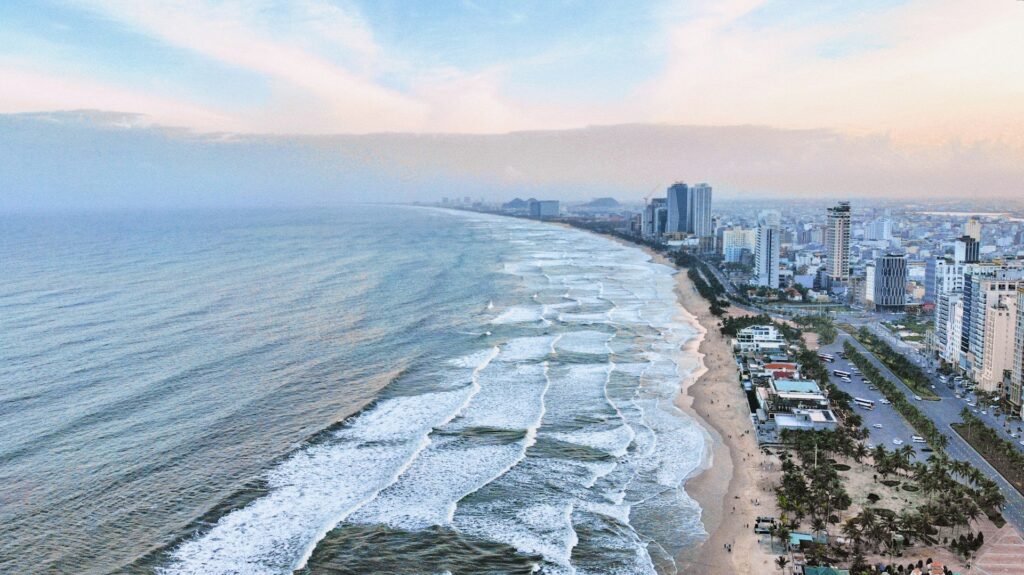
If you’ve been to some of Vietnam’s bigger cities like Hanoi or Ho Chi Minh City, you know how chaotic it can get.
Da Nang is the total opposite. It’s clean, modern, and way less hectic. Think of it as the perfect mix of chill beach life and easy access to city conveniences. The long, sandy coastline, light traffic, and relaxed pace make it a really easy place to call home.
Da Nang has plenty going on, but it’s never overwhelming. The Dragon Bridge is a must-see, especially when it does its fire and water show every weekend night. My Khe Beach is perfect for those lazy afternoons of swimming or just hanging out on the sand.
For a little more adventure, you can head to the Marble Mountains and check out the cave temples or take in the view from the Lady Buddha statue on Monkey Mountain. And if you’re craving a change of scenery, Hoi An, a beautiful, lantern-lit UNESCO town, is just a short drive away.
Oh, and food? Da Nang’s street food scene is unreal. Mi Quang (turmeric noodles) and Banh Xeo (crispy pancakes) are just the start of what you’ll want to try.
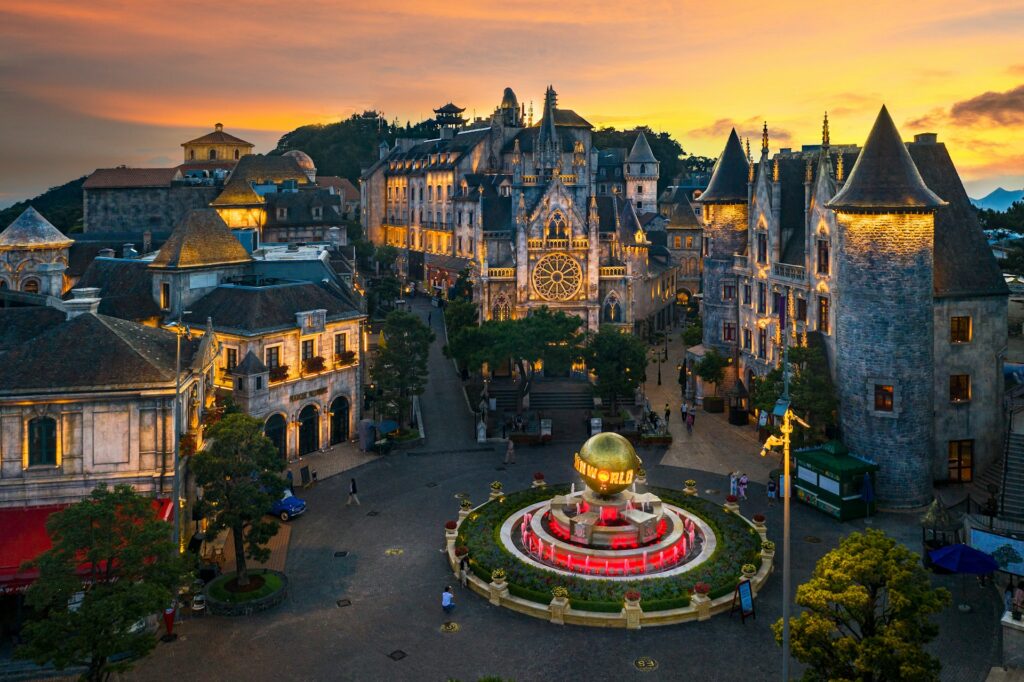
Living in Da Nang is ridiculously affordable. A comfortable life here can cost you around $400–$600 per month, including rent. You can find a decent one-bedroom apartment outside the city center for $250–$320.
Eating out is dirt cheap, too. Street food meals can be as low as $1.30–$2.40. It’s the kind of place where your money goes far, and you don’t have to sacrifice quality of life to keep it that way.
Category
Estimated Monthly Cost (USD)
Rent (Studio/1-BR Apt)
$300
Food (Street food & local markets)
$200
Transportation (Scooter/Grab)
$75
Utilities & Internet
$60
Miscellaneous (Leisure, visa)
$150
Estimated Total
$785
Practicalities
Visa: U.S. citizens can apply online for an e-Visa, which is valid for up to 90 days. For longer stays, you will need to explore other visa options through a Vietnamese embassy.
Safety: While violent crime is rare, be aware of petty theft. Bag-snatching by thieves on motorbikes is common, so keep your belongings secure. Also, be cautious about accepting drinks from strangers.
Internet: Vietnam boasts some of the fastest internet in the region, ranking in the top 20 globally. With average fixed broadband speeds over 260 Mbps, Da Nang is an excellent choice for remote workers.
3. Sucre, Bolivia: The White City on a Budget
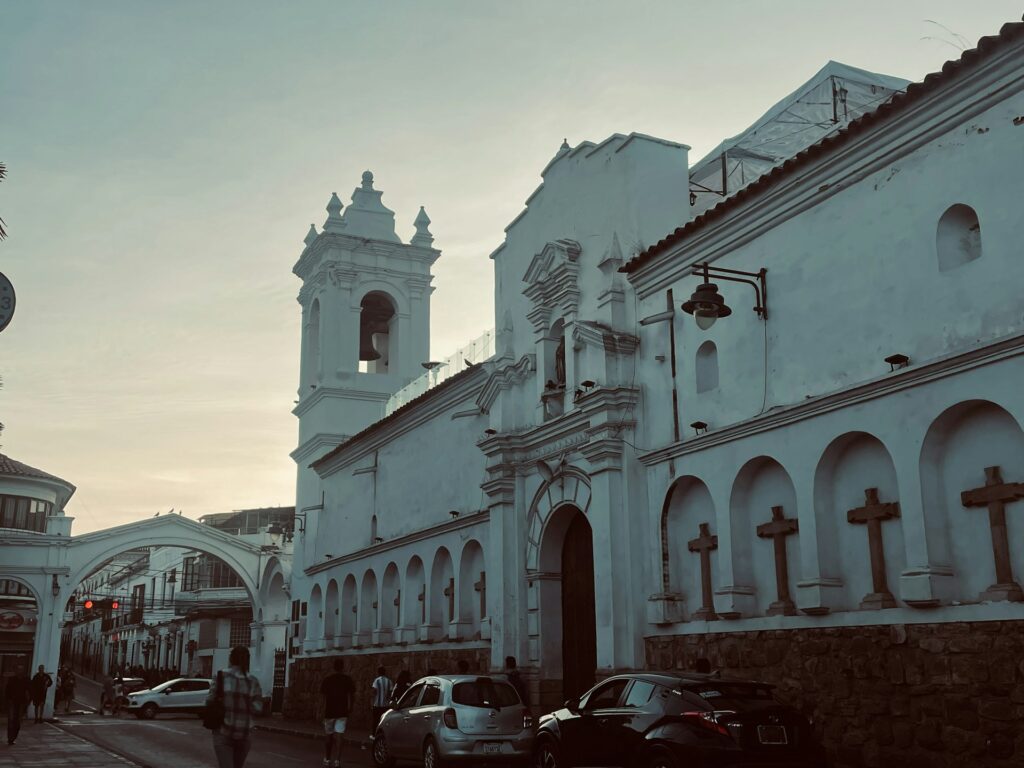
Sucre is Bolivia’s constitutional capital. Known as the “White City” because of its well-preserved colonial buildings, it’s nestled in a valley in the Andes and has a mild, temperate climate year-round.
The vibe here is chill and intellectual, partly because of its historic university, one of the oldest in South America. It’s the kind of place where you can enjoy slow-paced mornings and still feel like you’re surrounded by history.
Life in Sucre is all about soaking in the city’s rich history and culture. Spend your afternoons people-watching in Plaza 25 de Mayo, check out the Casa de la Libertad, where Bolivia declared its independence, or hike up to La Recoleta monastery for killer views of the city’s red-tiled roofs.
The Mercado Central is always buzzing with fresh produce, and it’s a great place to get a feel for the local rhythm. If you’re into a little adventure, you can head to Cal Orck’o Wall, where you’ll see thousands of fossilized dinosaur footprints.
Plus, the local accent here is one of the clearest in South America, which makes Sucre a popular spot for learning Spanish.
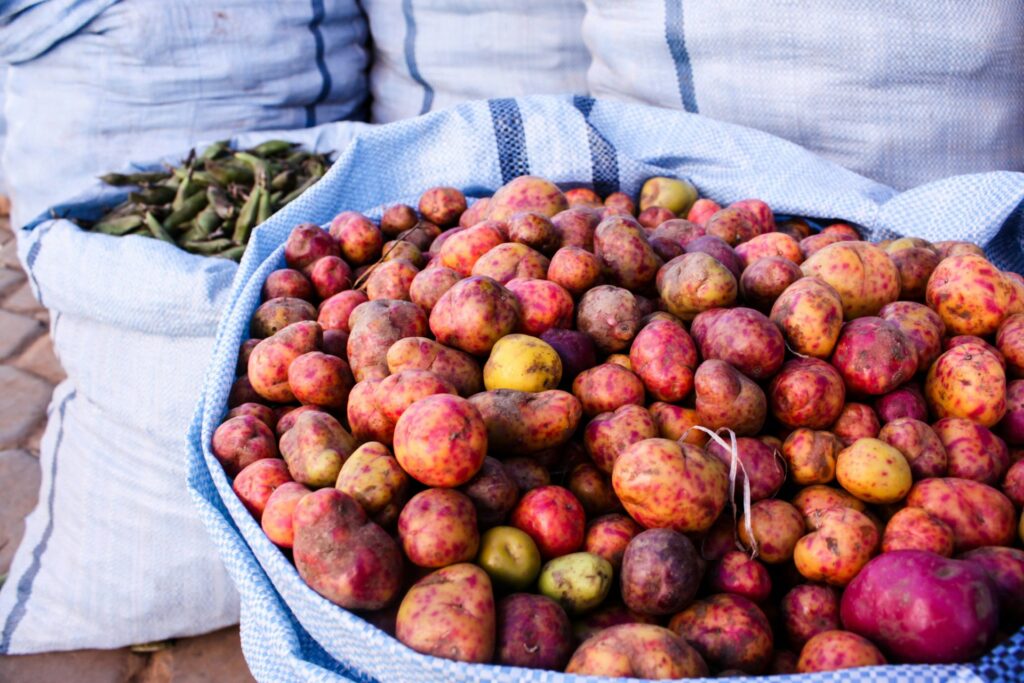
Sucre is one of the cheapest places you can live without compromising on experience. A comfortable life here will run you around $600–$800 a month. You can find a one-bedroom apartment outside the city center for as little as $173, and a two-bedroom place in the historic center might go for about $200.
Food is crazy cheap, too. About $20–$30 a week for fresh groceries. It’s the kind of place where you can live well and still have money left over to enjoy everything the city has to offer.
Category
Estimated Monthly Cost (USD)
Rent (1-BR Apt)
$250
Food (Markets & local eateries)
$150
Transportation (Public)
$20
Utilities & Internet
$70
Miscellaneous (Leisure, Spanish class)
$200
Estimated Total
$690
Practicalities
Visa: U.S. citizens require a tourist visa, which can be obtained upon arrival for a fee of $160. For long-term stays, you must apply for a Temporary Resident Visa, with the option for permanent residency after two years.
Safety: Be cautious of petty crime. There have been reports of criminals impersonating police officers and “express kidnappings,” where victims are forced to withdraw money from ATMs. It is best to avoid walking alone at night.
Internet: This is a key consideration. Internet in Bolivia is slower and more expensive than in other destinations on this list, with average speeds around 27 Mbps. For those seeking deep cultural immersion and a chance to disconnect, this can be a blessing. However, for digital nomads who rely on high-speed connections, it presents a significant challenge.
4. Arequipa, Peru: The Radiant White City of Volcanoes
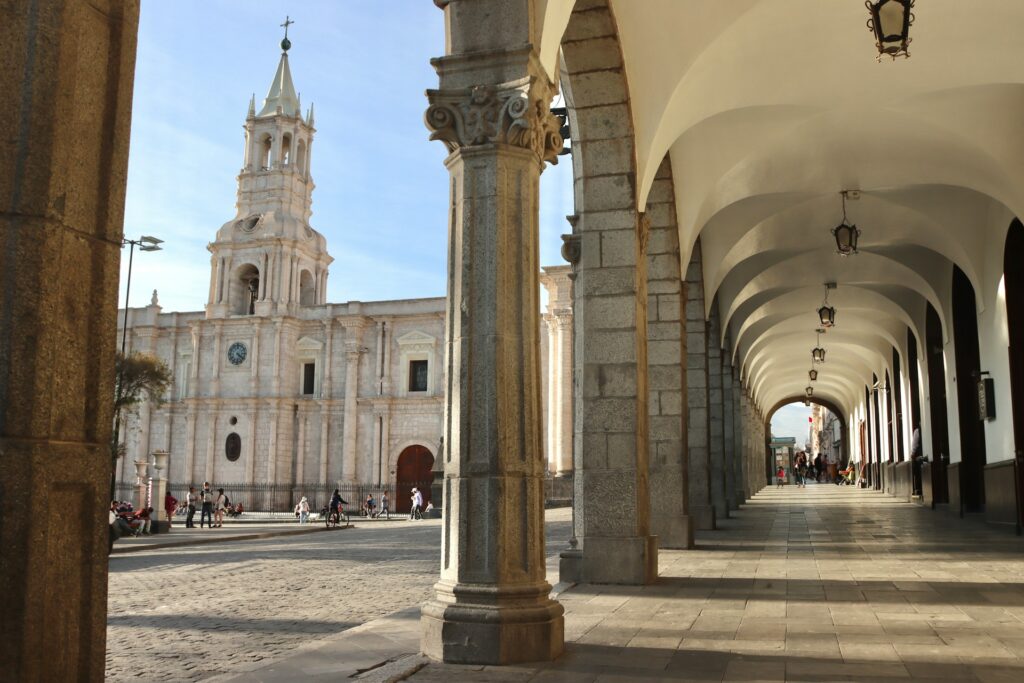
Arequipa has this stunning, almost otherworldly feel. Known as the “White City” for its beautiful colonial buildings made from sillar, a pearly white volcanic rock, it’s got a lot of history wrapped up in its gorgeous streets.
The city is surrounded by three giant volcanoes: Misti, Chachani, and Pichu Pichu, and sits in a valley with tons of sunshine and a pleasant climate year-round. It’s Peru’s second-largest city, but it feels more laid-back and easygoing than some of the country’s bigger urban centers.
Arequipa is a walker’s dream. You’ll want to start by checking out the Plaza de Armas, where the Basilica Cathedral takes center stage. From there, wander through the colorful, maze-like streets of the Santa Catalina Monastery—it’s basically a mini city within a city.
The San Camilo Market is another highlight, bursting with local produce and traditional food. For some jaw-dropping views, head to the Yanahuara viewpoint, where you can take in the whole city with the volcanoes in the backdrop.
And if you’re up for an adventure, Arequipa is the gateway to Colca Canyon, one of the deepest canyons in the world, where you can spot the Andean condor in flight.
As for food, Arequipa has some serious culinary chops. Don’t miss the rocoto relleno, which is a spicy, stuffed pepper that will totally hit the spot.
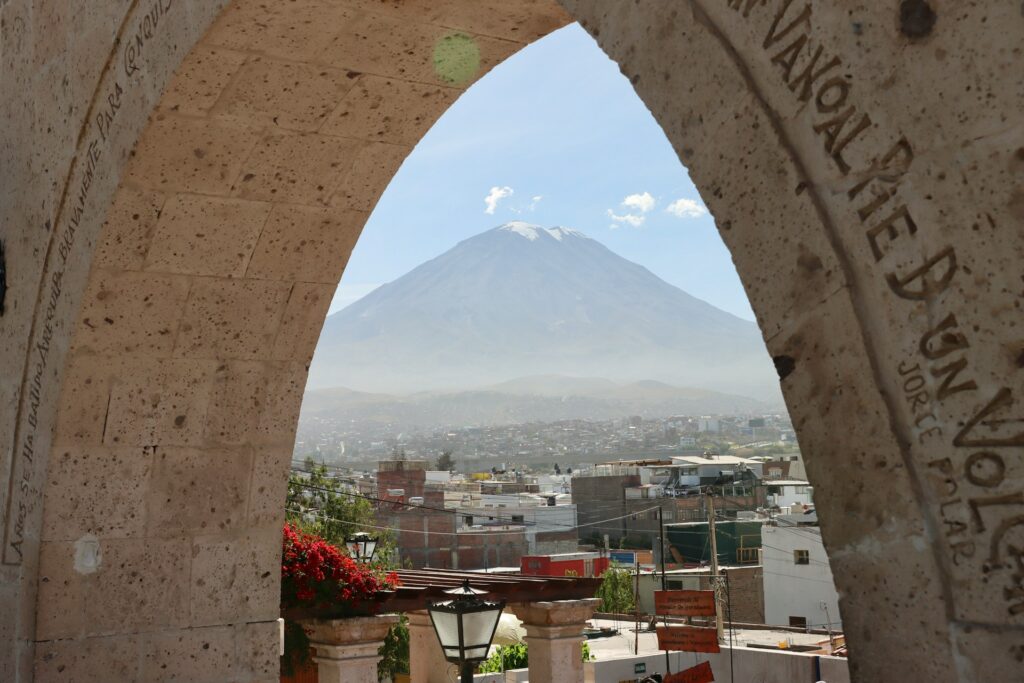
Arequipa is a super affordable place to live without skimping on quality. You can comfortably live on $520–$750 a month. Rent for a one-bedroom apartment typically runs between $250 and $500, so it’s not going to eat up your budget.
Dining out is cheap as well. Meals at local restaurants go for just $2–$5. For groceries, you’re looking at around $150–$250 per month, depending on your tastes.
In other words, you can live comfortably here while still having plenty left over to explore the city and its surrounding natural wonders.
Category
Estimated Monthly Cost (USD)
Rent (1-BR Apt)
$300
Food (Markets & local meals)
$200
Transportation (Public/Taxi)
$40
Utilities & Internet
$60
Miscellaneous (Leisure, tours)
$200
Estimated Total
$800
Practicalities
Visa: U.S. citizens with a steady passive income of at least $1,000 per month can apply for a Rentista Visa, which grants residency. Other options, like work visas, are also available. The U.S. Embassy in Lima handles visa services.
Safety: Street crime is a concern in Arequipa, as in other large Peruvian cities. Be particularly cautious at night and when using ATMs. It is recommended to use licensed, app-based taxi services rather than hailing one on the street.
Internet: Internet service is adequate but can be inconsistent. While high-speed fixed broadband is available, some sources report average speeds for remote workers to be around 9 Mbps, which could be a challenge for some.
5. Bacău, Romania: A Hidden Gem in Eastern Europe
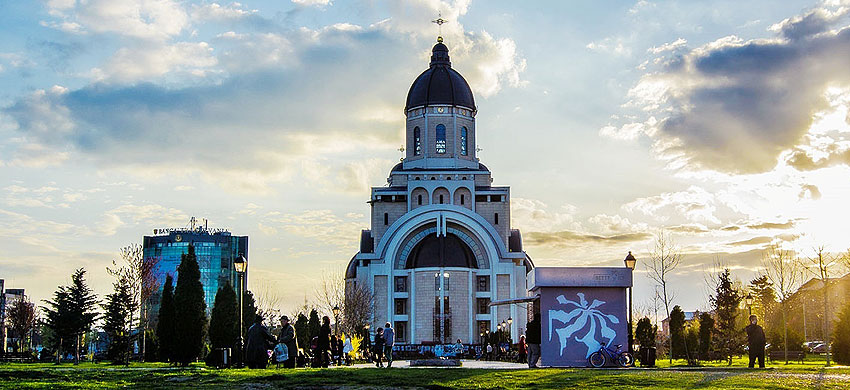
If you’re the type of traveler who loves exploring places that aren’t overrun by tourists, Bacău is your spot.
Tucked away in Moldavia, this quiet city offers an authentic Romanian experience, far removed from the tourist crowds. It’s a cultural hub with a laid-back vibe, surrounded by lush parks and rich history.
As the birthplace of George Bacovia, the famous symbolist poet, Bacău has an artistic edge, but it’s also a great base for exploring nature and the surrounding areas. It’s a peaceful place, perfect for those who like to slow down and enjoy the little things.
Life here revolves around green spaces and a slower pace. You can spend afternoons wandering around Mircea Cancicov City Park or head to Recreational Island, a peaceful spot for fishing, picnics, and just soaking in the natural beauty.
There’s also a solid cultural scene with the state theatre and a philharmonic orchestra if you’re into music and performance. Being close to the Carpathian Mountains means you’re also just a short trip away from hiking and skiing adventures.
Bacău’s history runs deep; once part of Moldavia, it has ties to centuries of resistance against Ottoman rule, giving it an interesting cultural backstory to dive into.
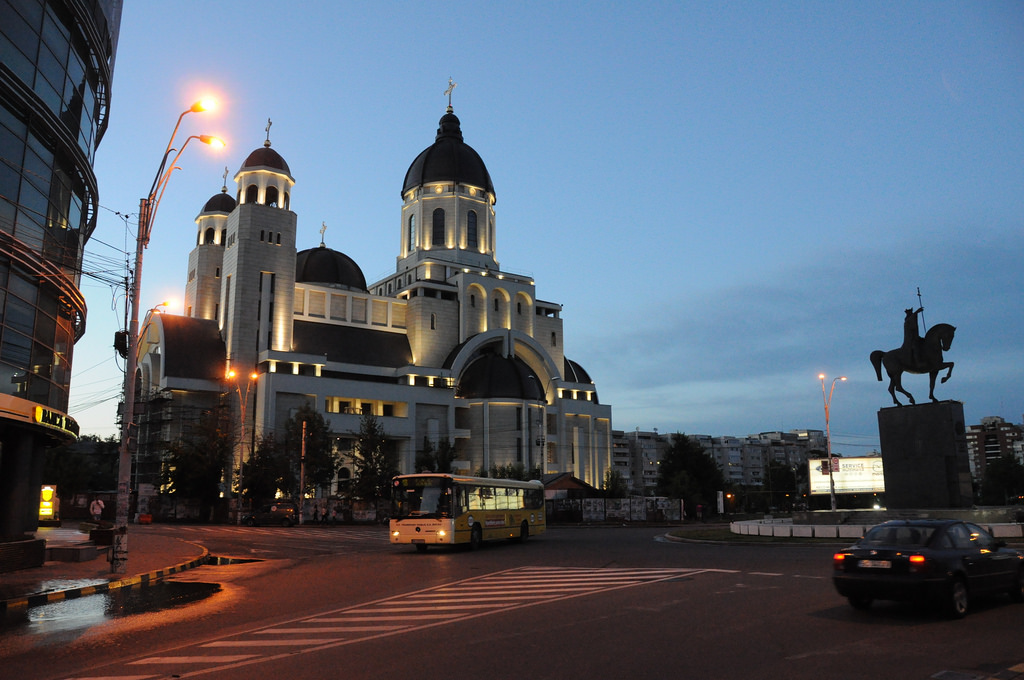
Bacău is one of the most affordable cities in Europe, and you’ll be amazed at how far your money can go. You can live comfortably on around $800–$900 per month, which is crazy cheap for Europe.
Rent for a two-room apartment is anywhere from $250 to $410, which means you can score a nice place without breaking the bank.
Food is super affordable, too. Your monthly grocery bill will probably be under $200, and a decent meal out will only set you back $8 to $12. It’s a city where you can live well, explore nature, and dive into local culture, all without draining your wallet.
Category
Estimated Monthly Cost (USD)
Rent (1-BR/2-Room Apt)
$350
Food (Groceries & dining out)
$250
Transportation (Public)
$40
Utilities & Internet
$80
Miscellaneous (Leisure, travel)
$200
Estimated Total
$920
Practicalities
Visa: As a non-EU citizen, you will need a long-stay visa (Type D) for stays longer than 90 days. This typically requires proof of financial means or sponsorship from an employer. The U.S. Embassy is located in Bucharest.
Safety: Violent crime is rare, but be mindful of pickpocketing and theft in crowded places. General scams can also be an issue, so it’s wise to be cautious.
Internet: Romania boasts some of the fastest and most affordable internet in the world. With average fixed broadband speeds well over 100 Mbps, Bacău is an excellent and reliable destination for remote work.
6. Bursa, Turkey: The First Capital of the Ottoman Empire
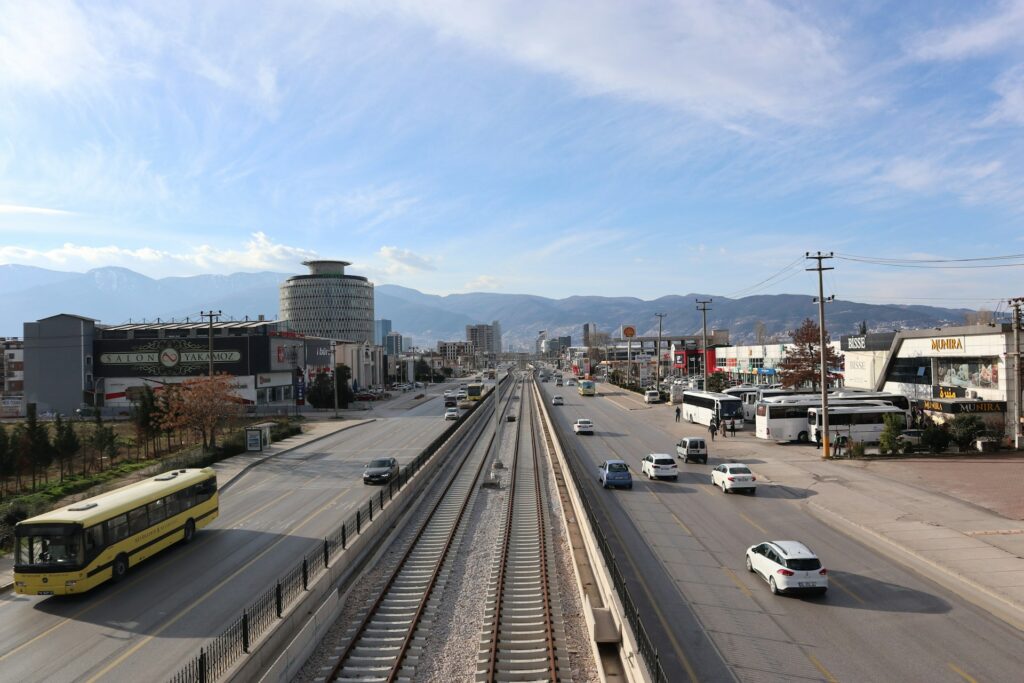
Bursa is a city that blends rich Ottoman history with a laid-back, nature-filled lifestyle. Known as “Green Bursa” for its parks, gardens, and proximity to Mount Uludağ, it’s the first capital of the Ottoman Empire, so there’s a lot of history here.
It’s less chaotic than Istanbul but still offers plenty of culture and energy. Imagine exploring centuries-old landmarks while having easy access to the beauty of nature, whether that’s hiking in the mountains or wandering through lush gardens.
In Bursa, you’re living in history. You can start with the Ulu Cami (Grand Mosque), a stunning piece of Ottoman architecture, or check out the intricately tiled Green Mosque.
The Koza Han, or Silk Bazaar, is a must-see for anyone who loves markets; this one’s full of history and charm. If you’re into history, Bursa is also home to the tombs of early Ottoman sultans.
For something different, you can take the cable car up to Mount Uludağ. In winter, it’s a ski paradise; in summer, it’s perfect for hiking and outdoor activities.
And when you’re done exploring, you’ve got to try the Iskender Kebab, a local specialty that will absolutely blow your taste buds away. To cap off the day, you can unwind in a traditional Turkish hamam (bath), which is an experience all on its own.
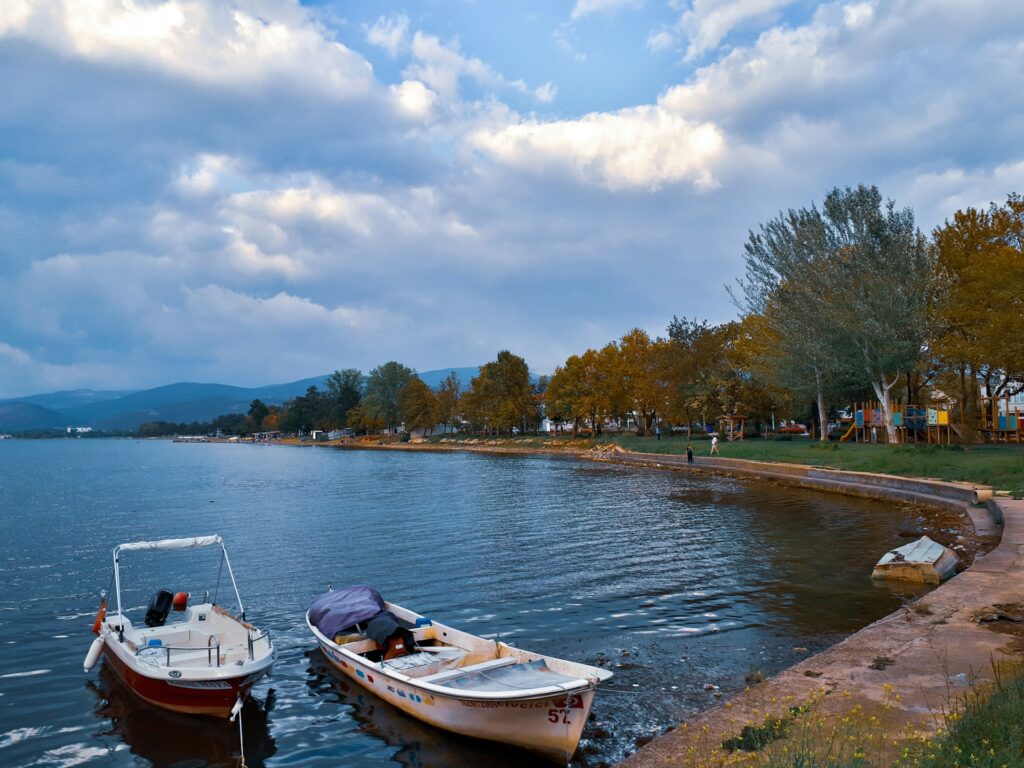
Thanks to the favorable exchange rate, Bursa is one of the most affordable cities in Turkey. Rent for a one-bedroom apartment is around $300 a month, which is pretty unbeatable.
Your grocery bill as a single person will be about $190 per month, and eating out at an inexpensive restaurant will cost you about $11.
For what you’re paying, you’re getting a lot of culture, nature, and history, without breaking the bank.
Category
Estimated Monthly Cost (USD)
Rent (1-BR Apt)
$300
Food (Groceries & local meals)
$250
Transportation (Public)
$50
Utilities & Internet
$80
Miscellaneous (Leisure, hamam)
$200
Estimated Total
$880
Practicalities
Visa: U.S. citizens can visit Turkey for up to 90 days without a visa. For longer stays, you must apply for a residence permit after you arrive in the country.
Safety: It is advised to exercise a high degree of caution in Turkey due to the threat of terrorism and the potential for political demonstrations. Avoid large public gatherings and protests.
Internet: Internet speeds in Bursa are solid for most needs. The median mobile download speed is around 53 Mbps, which is more than sufficient for remote work and streaming.
7. Crete, Greece: Mediterranean Island Life on a Shoestring
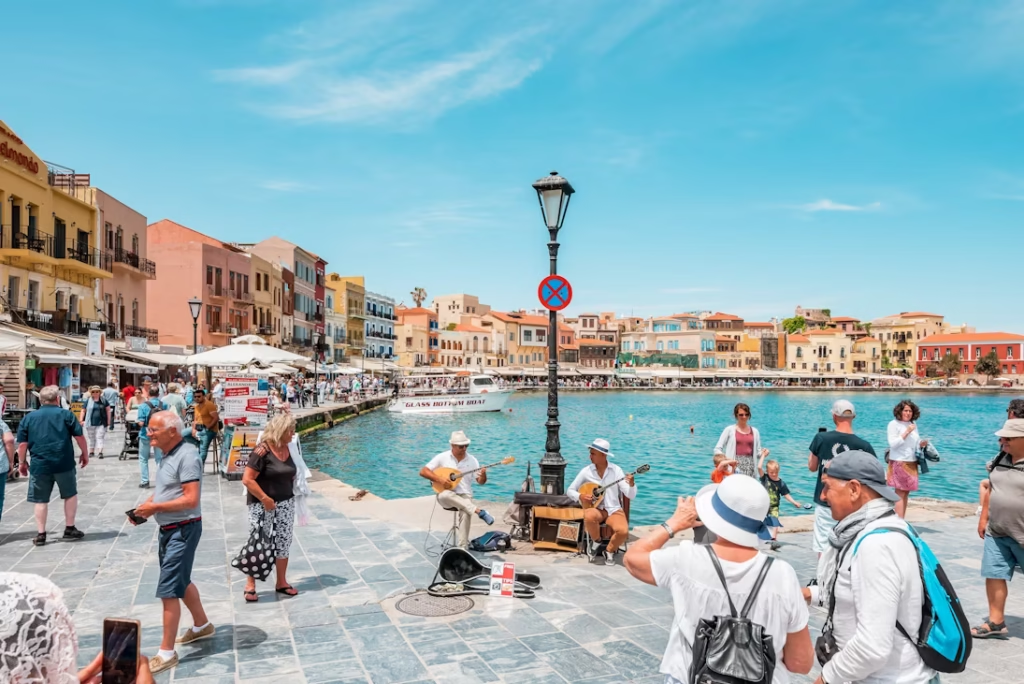
Crete is like stepping into a living postcard. Ancient myths, stunning beaches, rugged mountains, and a history that dates back to Europe’s first advanced civilization, the Minoans.
The island is a blend of everything you’d expect from the Mediterranean: deep gorges like the Samariá Gorge, idyllic beaches like Balos and Elafonisi, and warm, welcoming people. It’s a place where the old and new mix seamlessly, and the slow-paced life feels like it was made for relaxation.
Living on Crete is a mix of outdoor adventures and laid-back afternoons. You can get lost in the Venetian old towns of Chania and Rethymno, or step back in time at the Minoan Palace of Knossos near Heraklion. If hiking’s your thing, the island’s mountainous terrain offers plenty of trails.
The food is incredible. Fresh olive oil, local cheeses, seafood, and vegetables all make up the heart of the Cretan diet, which is a cornerstone of Mediterranean health. Eating in seaside tavernas with the sound of the waves in the background? Pure bliss.
The culture here is centered around strong family ties and a welcoming, generous spirit. It’s what the Greeks call philoxenia, the love of strangers.
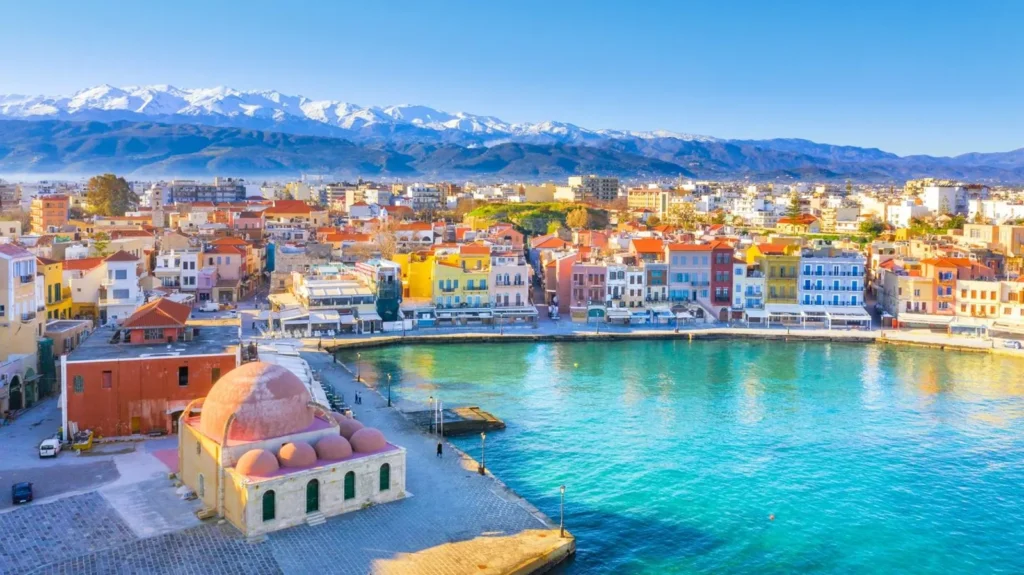
Living in Crete for less than $1,000 a month is definitely doable, especially if you’re okay living outside the touristy spots. Renting in smaller towns or rural areas can bring costs down significantly.
A modest one-bedroom apartment costs around $420 a month, but in some villages, you can find rentals as low as $320.
Your grocery bill will run you about $215–$375 per month, depending on how much you cook at home. For the lifestyle you get: amazing food, a beautiful landscape, and a rich culture. It’s a bargain.
Category
Estimated Monthly Cost (USD)
Rent (Modest 1-BR Apt, outside main cities)
$420
Food (Groceries & occasional taverna)
$300
Transportation (Public)
$70
Utilities & Internet
$100
Miscellaneous (Leisure)
$100
Estimated Total
$990
Practicalities
Visa: U.S. citizens can stay in Greece for up to 90 days without a visa. For a longer stay, you must obtain a special entry visa from a Greek consulate before you travel, and then apply for a residence permit once in Greece.
Safety: Crime rates are generally low. However, be aware of petty theft in tourist areas and take precautions against drink spiking, which has been reported on the islands.
Internet: Internet service is generally good and improving. Major cities like Heraklion have median mobile download speeds over 63 Mbps, and 5G coverage is expanding across the island, making it suitable for remote work.
8. Jaipur, India: The Vibrant “Pink City”
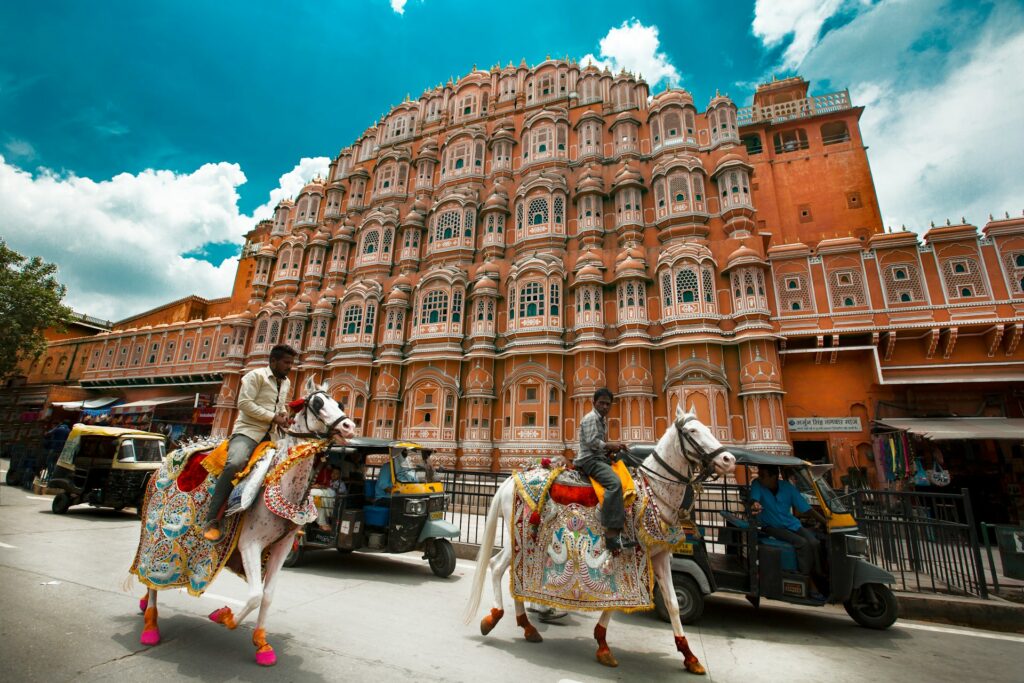
Jaipur is a feast for the senses. Known as the “Pink City” because of its uniquely colored buildings, the city is a vibrant mix of history, color, and energy. As the capital of Rajasthan, it’s India’s first planned city and remains a hub of culture and commerce.
Here, ancient forts, palaces, and temples sit side-by-side with busy markets, creating a fascinating contrast between the old and the new. The city’s lively atmosphere and rich heritage make it one of the most dynamic places in India.
Jaipur is a city where exploration never gets boring. You can check out the iconic Hawa Mahal (Palace of Winds), a five-story palace designed so royal women could watch street festivals from behind its intricate honeycomb facade.
Amber Fort, perched high on a hilltop, will transport you back to the royal Rajput era with its stunning architecture and rich history.
Don’t miss the City Palace complex or the Jantar Mantar, an 18th-century astronomical observatory that’s as fascinating as it is ancient.
Living here also means diving into the bustling local life, from wandering through colorful bazaars to discovering traditional arts like block printing. And if you love food, Rajasthani thali, a platter with various dishes, is a must-try.
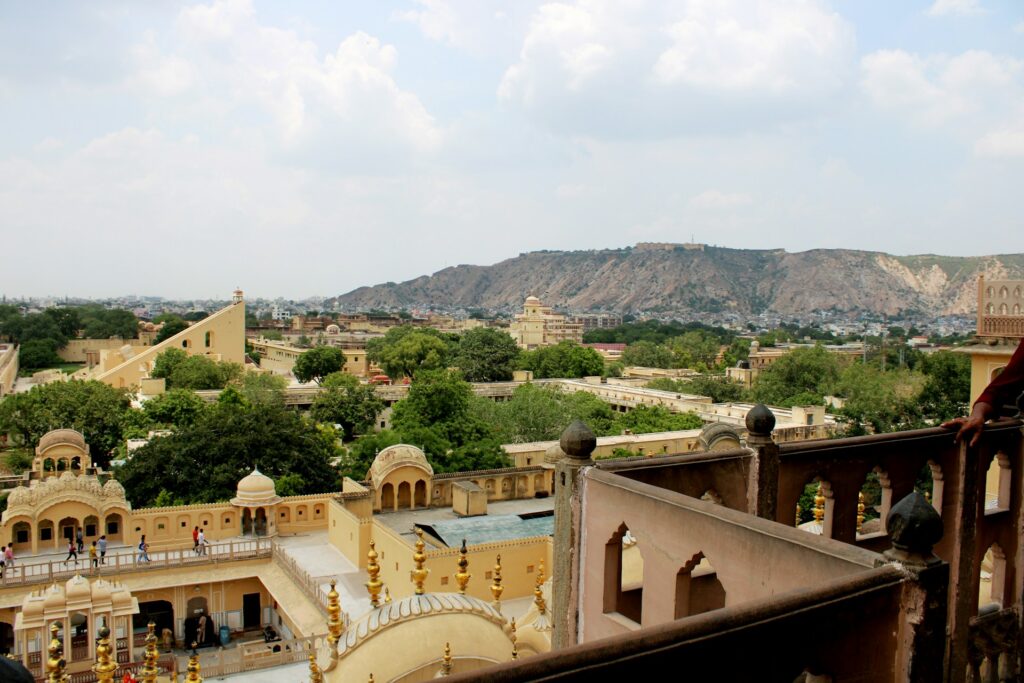
Jaipur is one of the most affordable cities on this list. A single person can live comfortably for just $210–$325 a month, not including rent. Rent for a one-bedroom apartment outside the city center is incredibly low, typically around $90–$100 per month.
Eating out is cheap too, with a meal at an inexpensive local restaurant costing only $3–$4. For the rich cultural experience you get here, it’s a total bargain.
Category
Estimated Monthly Cost (USD)
Rent (1-BHK Apt)
$150
Food (Groceries & local meals)
$150
Transportation (Public/Auto-rickshaw)
$40
Utilities & Internet
$50
Miscellaneous (Leisure, shopping)
$150
Estimated Total
$540
Practicalities
Visa: U.S. citizens need a visa to enter India. The e-Tourist visa is a convenient option, allowing stays of up to 180 days per calendar year. For longer-term stays, you must register with the Foreigners Regional Registration Officer (FRRO).
Safety: Be vigilant about your surroundings. Scams, pickpocketing, and food/drink spiking can occur, especially in tourist areas. Women should take extra precautions and avoid being alone in isolated places. Road safety is a major concern due to chaotic traffic and poor driving standards.
Internet: High-speed fiber internet is widely available and very affordable in Jaipur, with various providers offering plans with speeds from 100 Mbps up to 1 Gbps.
Also Read: 10 Expat Friendly Cities Where $1,500 a Month Feels Like a Millionaire’s Lifestyle
9. Dar es Salaam, Tanzania: A Bustling Coastal Metropolis
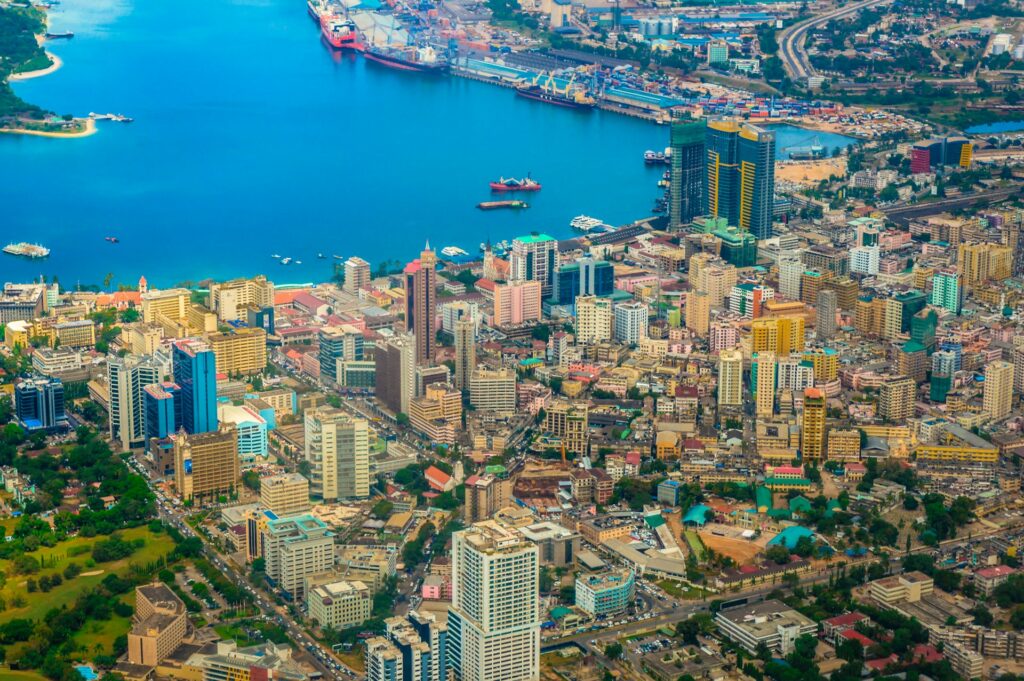
Dar es Salaam, meaning “Haven of Peace” in Arabic, is Tanzania’s largest city and economic powerhouse, but it doesn’t feel like a bustling metropolis. Despite being a major port city on the Indian Ocean, it has a laid-back, coastal charm.
The city’s cultural vibe is shaped by a mix of Swahili, Arab, Indian, and European influences, giving it a unique, multicultural flavor. It’s a lively place, but not overwhelming, offering the perfect balance of urban buzz and relaxed seaside living.
Living in Dar es Salaam is a mix of city energy and beach vibes. You can dive into the local culture by navigating the chaotic yet colorful Kariakoo Market, or take in the history of Tanzania at the National Museum. The Village Museum gives you a peek into traditional Tanzanian life, and it’s a great spot for anyone interested in the country’s diverse cultures.
If you need to unwind, head to Coco Beach, where the locals flock to on weekends for swimming and picnicking. And if you’re up for a little island escape, Dar es Salaam is the gateway to Zanzibar, or you can hop on a boat for a short trip to Bongoyo Island for snorkeling and relaxing in the sun.
The city is also known for its vibrant Tinga Tinga art style, which you can check out at local artist cooperatives, often while the artists are at work.
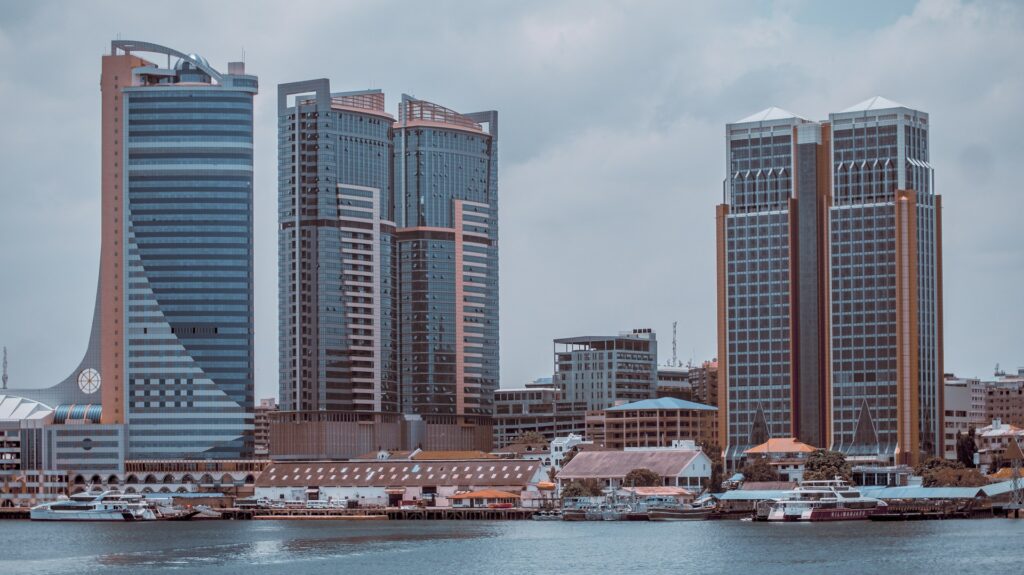
Dar es Salaam offers a range of living costs depending on your lifestyle. If you’re living like a local and sticking to a modest budget, you can easily get by on under $500 a month.
However, if you prefer an expat lifestyle with imported goods and dining out at international restaurants, expect to spend closer to $750–$1,000 a month, not including rent.
Rent for a modest one-bedroom apartment is usually under $400, so living here can still be affordable, especially if you embrace local culture and day-to-day life.
Category
Estimated Monthly Cost (USD)
Rent (Modest Apartment)
$400
Food (Local markets & food)
$200
Transportation (Public)
$50
Utilities & Internet
$100
Miscellaneous (Leisure)
$150
Estimated Total
$900
Practicalities
Visa: U.S. citizens can obtain an Ordinary Visa for a single entry, valid for up to 90 days, for tourism and other purposes. Longer stays require different types of permits.
Safety: Petty crime is a concern. It’s advisable to avoid walking alone after dark and to not display expensive items. Be aware of your surroundings to avoid opportunistic theft and potential kidnappings.
Internet: Internet connectivity can be a mixed bag. While some areas have decent connections, average download speeds can be around 28 Mbps with high latency, which might not be ideal for remote workers with demanding needs.
10. Mombasa, Kenya: Swahili Culture on the Indian Ocean
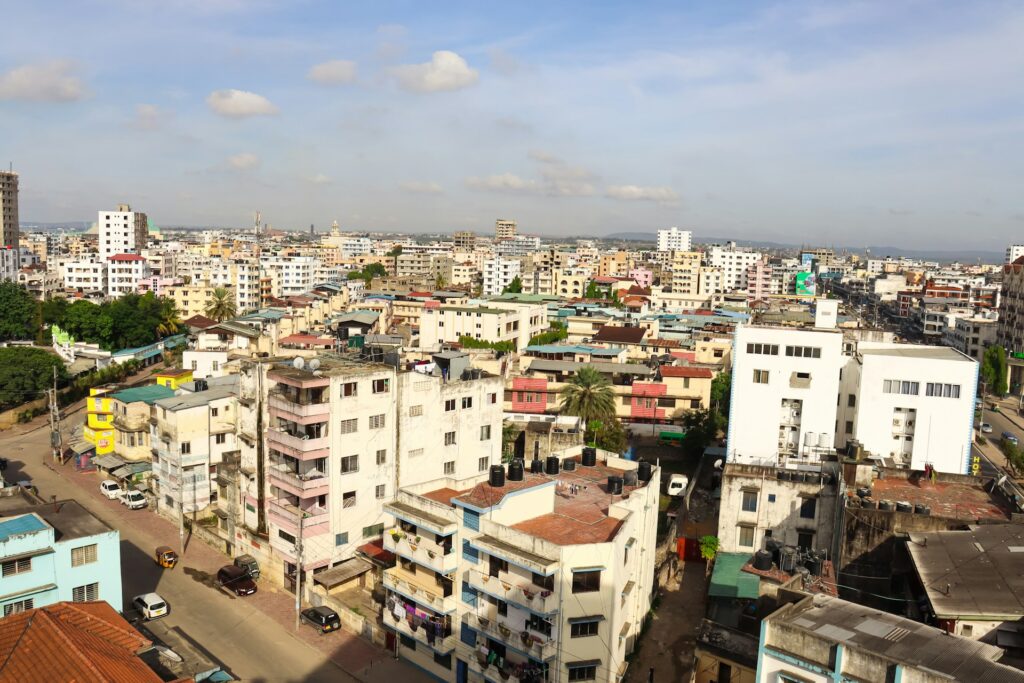
Mombasa, Kenya’s oldest and second-largest city, is a historic port town with a unique soul shaped by centuries of maritime trade. The city’s culture is a fascinating blend of African, Arab, Persian, and European influences, creating a distinct Swahili identity that stands apart from the rest of the country.
With beautiful beaches and a slower pace of life than Nairobi, Mombasa offers a refreshing coastal haven. It’s a city full of energy but with a relaxed vibe, making it an ideal spot to unwind while soaking up history and culture.
Mombasa’s rich history is everywhere you look. You can visit Fort Jesus, a 16th-century Portuguese fort that’s now a UNESCO World Heritage site, or get lost in the winding alleys of the Old Town, where you’ll find intricately carved wooden doors and historic mosques.
The city is surrounded by stunning white-sand beaches, and if you’re looking for a peaceful getaway, Diani Beach to the south is a favorite spot for both locals and tourists.
The best way to experience Mombasa’s culture is through its food, a vibrant fusion of African and Arabic flavors. And don’t forget the local markets, packed with life, color, and the rhythm of daily Swahili culture.
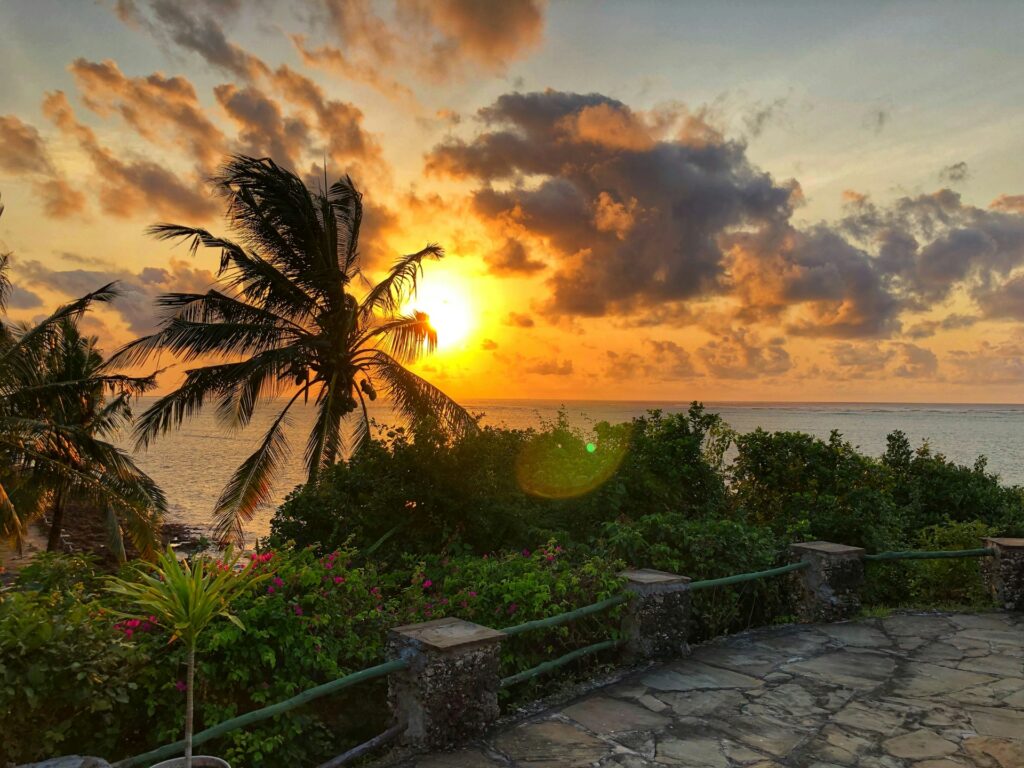
Mombasa is incredibly affordable, especially for a coastal city. A single person can live comfortably on about $580–$700 a month. Rent is especially cheap, with one-bedroom apartments averaging around $167 a month.
If you stick to shopping at local markets, your monthly grocery bill can be as low as $30–$50, making it an easy city to live in on a budget while still enjoying a rich cultural and beachside lifestyle.
Category
Estimated Monthly Cost (USD)
Rent (1-BR Apt)
$200
Food (Local markets)
$100
Transportation (Public/Tuk-tuk)
$50
Utilities & Internet
$70
Miscellaneous (Leisure)
$200
Estimated Total
$620
Practicalities
Visa: Kenya has streamlined its entry process for all foreign nationals with an Electronic Travel Authorisation (eTA) system. You must apply and receive approval online before you travel.
Safety: Crime rates can be high. Be particularly vigilant in crowded areas, around the Likoni Ferry, and in isolated spots. It’s best to avoid walking alone at night and to be cautious of theft and scams.
Internet: Average internet speeds are around 10 Mbps. This is sufficient for basic browsing and communication, but might be a limitation for remote workers who need faster, more reliable connections.
11. Penang, Malaysia: A Culinary and Cultural Haven
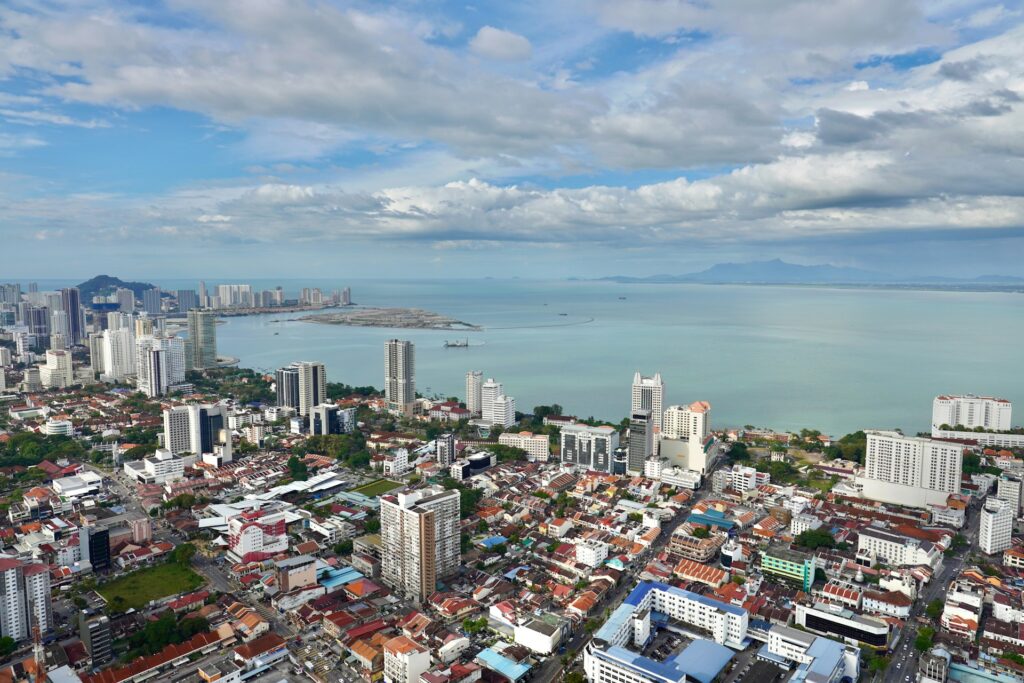
Penang, an island on Malaysia’s northwest coast, is a vibrant fusion of cultures and history. Its capital, George Town, is a UNESCO World Heritage Site, and the island has seen centuries of influence from Malay, Chinese, Indian, and British colonial cultures. This melting pot of traditions creates a unique, harmonious vibe that’s reflected in both the architecture and, most famously, the food.
Penang is a place where culture and cuisine come together in an incredibly dynamic way, making it one of the most fascinating destinations in Southeast Asia.
Exploring Penang is a journey through time and flavors. You can wander the streets of George Town, where you’ll discover iconic street art murals, historic clan jetties built over the water, and beautifully preserved colonial buildings.
If you’re into temples, Kek Lok Si, one of Southeast Asia’s largest Chinese temples, is a must-see, or you can ride the funicular up Penang Hill for jaw-dropping views of the island. But the real magic happens when you dive into Penang’s food scene.
It’s renowned worldwide for its street food, and hawker centers are the heart of it all, offering a dizzying array of affordable, mouth-watering dishes from various cultures. From char kway teow to asam laksa, eating your way through Penang is an experience you’ll never forget.
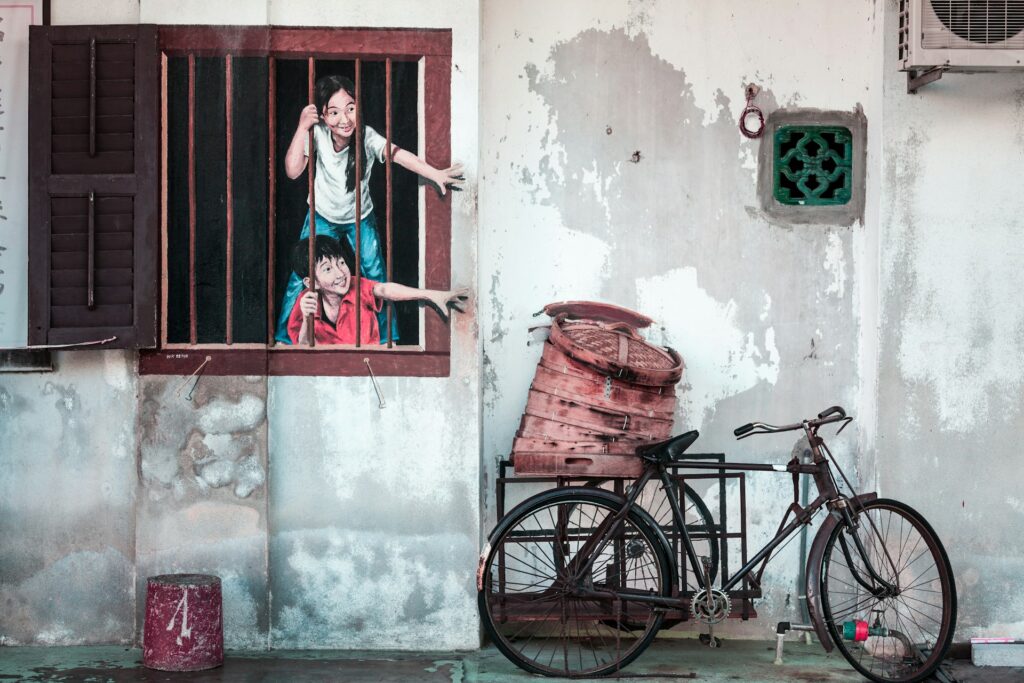
Penang offers an exceptional quality of life at a very low cost. You can live comfortably on $800–$1,100 a month, which covers rent, food, and other expenses. Rent for a one-bedroom apartment is surprisingly cheap, averaging $260–$300 per month.
The best part? Eating out is a dream, with a meal from a hawker stall often costing just a few dollars. For anyone who loves good food, rich culture, and a relaxed lifestyle, Penang offers all that and more without breaking the bank.
Category
Estimated Monthly Cost (USD)
Rent (1-BR Apt)
$300
Food (Hawker stalls & groceries)
$250
Transportation (Public/Grab)
$60
Utilities & Internet
$70
Miscellaneous (Leisure)
$200
Estimated Total
$880
Practicalities
Visa: For long-term stays, the Malaysia My Second Home (MM2H) program is a popular option, though it has significant financial requirements. For shorter stays, standard tourist visas are available.
Safety: Penang is considered a very safe destination. Violent crime is rare, and the local population is known for being friendly and welcoming to foreigners.
Internet: Internet speeds can be a concern for those needing a fast connection. Average speeds are around 16 Mbps, which is slower than many other digital nomad hubs.
The Nitty-Gritty: Visas, Finances, and Healthcare
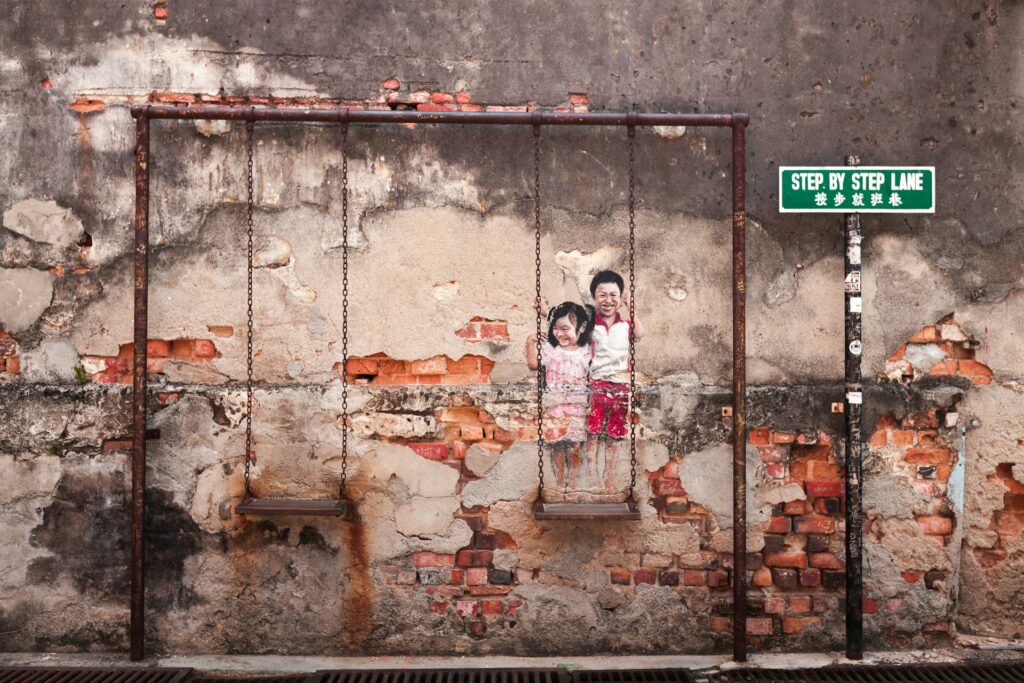
Moving abroad is exciting, but it comes with a fair share of planning. The dream of living in one of these 11 charming destinations for under $1,000 a month is definitely within reach, but it requires some careful thought and preparation to make it work.
The first thing to tackle is the visa. Every country has its own rules, and they can vary widely. Some places require proof of a steady income, others might offer retirement or investor visas, and some may have specific programs for remote workers. It’s essential to check the embassy or consulate website of the country you’re interested in for the most accurate, up-to-date info, as these requirements can change unexpectedly
Handling your finances across borders can get tricky. Traditional banks often charge steep foreign transaction fees, so it’s a good idea to look into modern financial services like Wise or Revolut. These services let you hold multiple currencies and transfer money at much lower fees than typical banks.
Also, it’s wise to have at least two different ways to access your money, whether through local bank accounts or digital payment platforms. Don’t forget to build an emergency fund that covers at least 3–6 months of living expenses, just in case.
Your health insurance from home probably won’t cut it for long-term stays abroad, so you’ll need to shop for international health insurance.
Make sure you’re covered for any unexpected medical needs, especially in a country where healthcare systems differ significantly from what you’re used to. International health insurance plans are an investment in your peace of mind and health.
Final Thoughts
Living on $1,000 a month requires adjusting to a more local lifestyle. This might mean shopping at fresh markets instead of pricey supermarkets, eating at small local eateries, and using public transportation. It’s all about embracing a simpler, more intentional way of life where experiences matter more than things.
For remote workers, choosing the right destination is a balancing act. Places like Sucre may offer amazing cultural experiences, but could have slower internet speeds.
Cities like Da Nang or Bacău, on the other hand, have excellent internet and modern amenities, but may feel more “globalized” and less immersive. It’s all about what you value most: fast internet or deeper cultural immersion.
Ultimately, deciding to move abroad is choosing a lifestyle that’s richer, more purposeful, and full of adventure. Living in these 12 destinations for less than $1,000 a month is totally doable. The only question left is: which one will you choose?